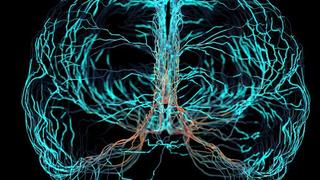Improving Patients’ Lives After Stroke

Life after a stroke can be difficult for patients, particularly those in the chronic stroke phase, which occurs six months after the initial event. Fear of physical injury can keep them inactive, and inactivity can make it more difficult to complete what were once simple physical tasks.
Saint Joseph’s Professor and Vice Chair of the Department of Physical Therapy Margie Roos, PT, DPT, PhD, and her students are using exercise to help stroke patients in this stage of recovery be more active and participate in their communities. For Roos, that means helping them reach their goals — whether that goal is to go back to work or simply to walk across the parking lot to a grandson’s baseball game.
“There's this vicious cycle of, they're not very active, so then they have trouble doing things. Then they have trouble doing things, so they're not very active," she says.
Roos and Gregory Thielman, PT, MSPT, ATC, EdD, professor of physical therapy, have been working on two research projects that aim to break this cycle using cognitive retraining. This involves helping a patient who suffered a traumatic brain injury, such as a stroke, retrain previously learned skills and develop compensatory strategies.
Funded by the Edna G. Kynett Memorial Foundation, Roos’ research sought to discover whether a brain fitness program called Ageless Grace helped stroke patients improve their cognition and movement. Physical therapy and occupational therapy students were trained on the program and later led classes with patients over Zoom during the pandemic.
“There's this vicious cycle of, they're not very active, so then they have trouble doing things. Then they have trouble doing things, so they're not very active.” - Margie Roos, PT, DPT, PhD, professor and vice chair of the Department of Physical Therapy
Exercises challenge participants to think, speak and move at the same time. One example of an exercise is “front row orchestra,” during which patients are asked to choose an instrument and mimic playing it. While completing this action, participants were also asked to observe the instruments others were playing and name those.
“Often, a physician will suggest Sudoku or crossword puzzles to improve your memory, but these are sedentary games,” Roos says. “In contrast, this is an exercise program that makes your brain work. It’s really challenging the brain but, in addition, it requires movement. One of the really nice things about it is that all the exercises are done in a seated position, so everybody can do it.”
After logging on twice a week for 12 weeks, Roos found that the low-intensity exercise program improves overall mobility for a control group of healthy older adults. And during class, Roos says, she observed that participants who previously suffered a stroke were improving in their dual-tasking abilities.
In addition to Roos’ low-intensity exercise study, she was awarded a grant to investigate the impact of a higher-intensity circuit training program that combines treadmill walking, balance retraining, and upper- and lower-extremity exercises with cognitive retraining to improve recovery in stroke patients. This study is still in the early stages.
“It's pretty clear that when people exercise, especially if they have a neurologic injury, they need to exercise at a certain intensity to make the brain change the way it functions,” she says. “This can in turn get you to be more active and have better brain function.”
